STEM & Society: Women and Girls in Science
by Catriona Nguyen-Robertson MRSV
Global challenges like tackling climate change, fighting infectious diseases, and ending poverty are just that: global. They affect every one of us. And we need every single idea on the table. The different hurdles that women overcome in society and the lives they live mean that they have something unique to bring to the table – different approaches to solving global challenges.
Yet ongoing institutional gender barriers continue to get in the way. The poor attraction and retention of girls and women in STEMM is often referred to as a “leaky pipeline”. It is one that begins from an early age, and the issue compounds as women progress through their careers. The result is a system with low representation of women in STEMM industries – especially in senior positions.
How do we encourage more girls to pursue STEMM, and importantly, how do we keep them there?
On the International Day of Women and Girls in Science, four leading female scientists discussed these two questions. Facilitated by ABC science journalist Natasha Mitchell, Dr Isabelle Kingsley, Professor Madhu Bhaskaran, Dr Marguerite (Maggie) Evans-Galea, and Associate Professor Sophie Adams shared their eye-opening insights in the Legislative Council Chamber at Parliament House.
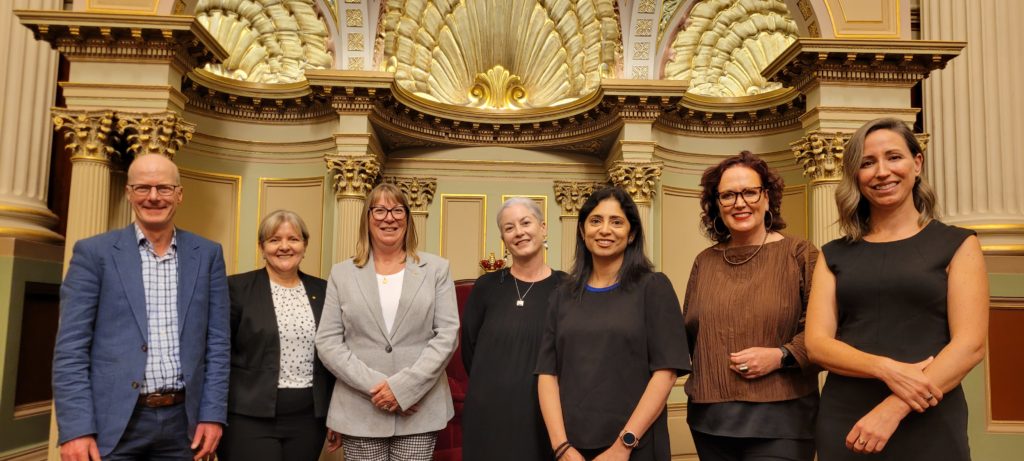
Several key factors perpetuate the STEM gender gap. Gender stereotypes portray certain STEM fields as masculine, girls have fewer role models to inspire their interest in these fields, and subsequently, because fewer women study and work in STEM, these fields tend to sustain exclusionary, male-dominated cultures that are not supportive of or attractive to women and other minority groups – it is a perpetual cycle that we need to break. Growing up, we see limited examples of female scientists and engineers in books, media and popular culture.
That is why we need to smash these stereotypes. A scientist is not just a man with crazy hair in a lab coat, nor is an engineer a man in a hard hat. Madhu spoke about how she is tired of seeing these stereotypes for engineering, and wonders why we are not shining the same spotlight on the diverse pool of excellent scientists as we tend to shine on sports stars.
Even in the absence of role models, there are many reasons why girls are initially attracted to science. Sophie’s desire to understand everything about the world led her naturally to science. Maggie similarly constantly asked her mother questions that began “Why…?”, and in response was encouraged to find the answers herself. In contrast, for Mahdu it was expected that she would become either a doctor or an engineer, due to societal and parental pressure.
There is a lot of enthusiasm for scientific inquiry among girls, but there are also many reasons that the enthusiasm dwindles. As a Research Associate for the Office of the Women in STEM Ambassador, Isabelle tracks where in the ‘pipeline’ girls begin to slip through the cracks.
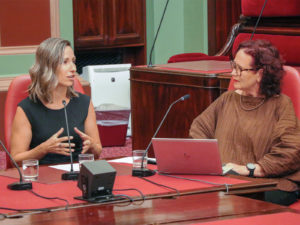
By the time they reach high school, girls begin to lose their confidence and/or interest in STEM. Studying science becomes less of a creative endeavour, and more of a memorisation chore. Isabelle proposes that rather than focusing on standardised tests, which only determine how well students can remember facts from textbooks, the education system should encourage students to learn with hands-on science. Young scientists should be out in the field, or getting their hands dirty. Sophie has witnessed how life-changing ‘experiences of awe’ are for the women scientists who voyage to Antarctica as part of the Homeward Bound program. These experiences inspire creativity and curiosity – key elements of science – and may perhaps keep students’ passion for science alive.
Back to the STEM ‘pipeline’, and we see even more women are lost at university. Women comprise only 36% of enrolments in STEM courses, and this percentage drops even lower by the time women reach the workforce across all STEM industries1. The panellists and Natasha hope to see more of the women and non-binary people completing degrees in STEM to then work in many of the different STEM careers available.
These five women alone demonstrate how varied a “STEM career” can be: a researcher, an engineer, a medical director, a radio science journalist, and a STEM career strategist. There are so many possibilities, but they can be hard to access – especially if you cannot see them.
If we can be successful in attracting more girls into STEM fields, we desperately need systemic change to create an environment that they would then want to stay in. Women face many and varied cultural and systemic barriers to success; not all women are the same in what they experience, but it is not necessarily easy for any of them. All four panellists have caring responsibilities as mothers in addition to successful careers, and Madhu, in particular, arrived in Australia as a migrant with no friends or family to support her growing family.
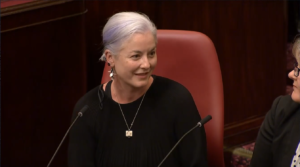
Women also face biases when it comes to applying for promotions, grants, resources, etc. – whether they are overt or unconscious. We all have a range of unconscious biases to varying degrees, which form throughout life as the result of our brain performing ‘mental shortcuts’. While these shortcuts can sometimes result in favourable or helpful biases, they can also negatively influence our thoughts and decisions. The more that people recognise their own unconscious biases – especially regarding gender and age – the easier it is to keep these biases in check.
While unconscious biases tend to lead to greater rejection for women in STEMM, this bias can be reduced when information divulging gender or age are hidden from applications for jobs or resources. For example, NASA levelled the playing field for women and other marginalised groups when they removed names on applications for Hubble Space Telescope observation time. The gap between women and men’s success rates shrank to 1% and, for the first time ever, women were more successful than men in scoring observation time – a highly coveted resource2. Based on this promising data, the Office of the Women in STEM Ambassador is now leading a national trial to study the effects of anonymising grant applications for in-demand scientific equipment such as telescopes, synchrotrons, and supercomputers.3
Things are slowly getting better: people are more conscious of the unconscious bias phenomenon, microaggressions towards women in the STEM workforce are becoming less common, initiatives to support women are being put in place, and there has been a culture shift. Everyone needs to be involved in making these improvements and shaping the future of STEM.
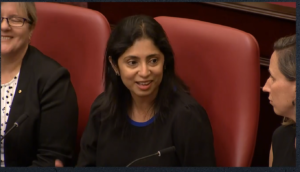
We are starting to patch up the cracks in the leaky pipeline. However, what once looked like a straight, narrow pipe (especially to an early career researcher who had only ever been exposed to academia) is quite different. It is more like a funnel, as women with STEM qualifications spread out into more areas and types of jobs: research, commercialisation, communication, education, policy, and more. It would be great to one day have the chambers of Parliament House filled with women policymakers with a STEM education. Anything is possible.
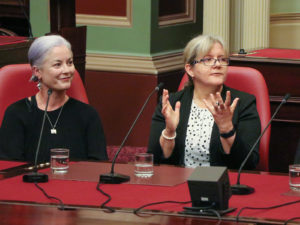
Working together, we can create change. To all the girls in science, support yourself with the right people who can propel or push you in the right direction. While women such as Sophie, Maggie, Madhu, Isabelle, and Natasha faced many challenges, they are developing powerful ways to change the situation so that the next generation of women scientists can fully flourish. Thinking about their bright future, ‘it’s so exciting what’s coming,’ says Natasha.
You can watch the full forum on the Parliament of Victoria website: https://www.youtube.com/watch?v=TXT7RWXVx9w
References:
- Australian Government Department of Industry, Science and Resources. ‘The state of STEM gender equity in 2022. 23 September 2022. https://www.industry.gov.au/news/state-stem-gender-equity-2022#:~:text=Girls’%20confidence%20in%20STEM%20subjects,percentage%20point%20drop%20from%202020
- Strolger, Lou and Natarajan, Priyamvada. ‘Doling out Hubble time with dual-anonymous evaluation.’ Physics Today. 1 March 2019. https://physicstoday.scitation.org/do/10.1063/PT.6.3.20190301a/full/
- Kingsley, Isabelle. “Anonymised Research Project | Women in STEM Ambassador.” Australia’s Women in STEM Ambassador, https://womeninstem.org.au/research-projects/research/
- Video






